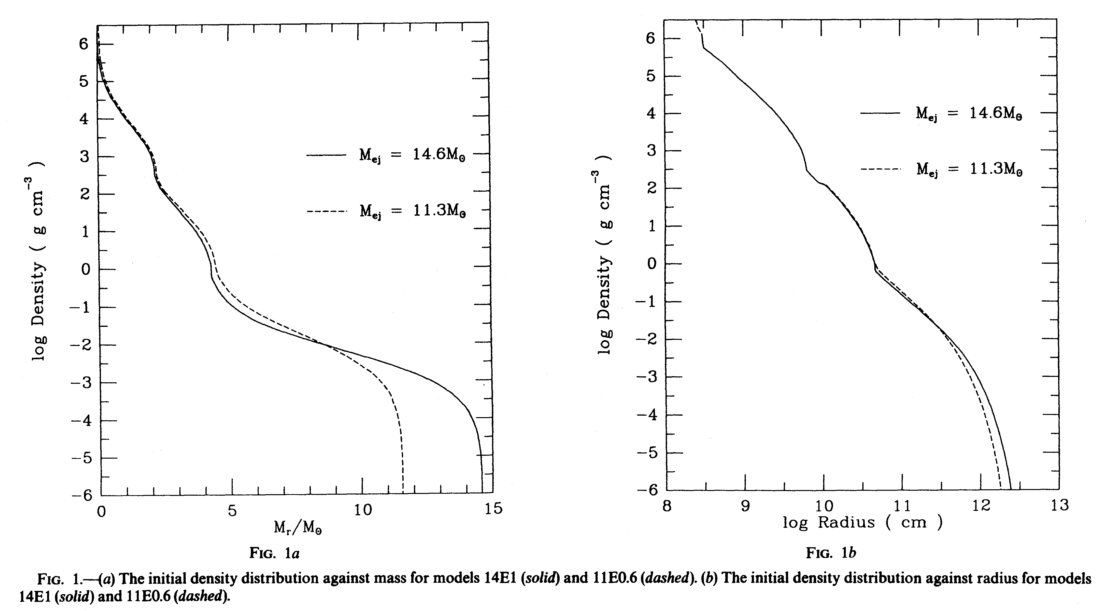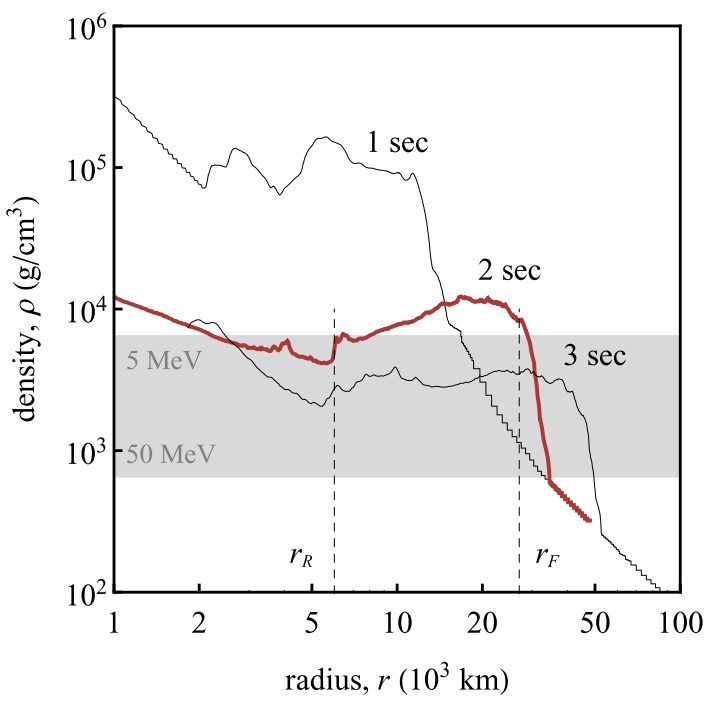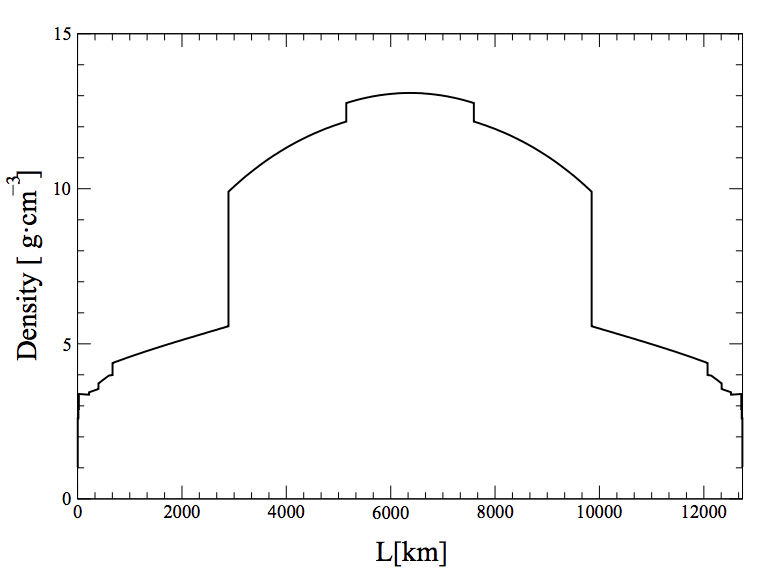1.1.1. Scales¶
We need to discuss the scales relavent to different environments.
1.1.1.1. Supernova¶
1.1.1.1.1. Initial Matter Density Configuration¶

Fig. 1.6 Supernova initial matter profile from [shigeyama1990].¶
- shigeyama1990
Shigeyama, T., & Nomoto, K. (1990). Theoretical light curve of SN 1987A and mixing of hydrogen and nickel in the ejecta. The Astrophysical Journal, 360, 242. doi:10.1086/169114
1.1.1.1.2. Early Stage¶
One of the interesting stages is the bounce on the core.
To find out the relavent length and energy scales, we need to know
size of supernova,
matter profile.
From the 2D simulation by E. Borriello et al, the size of supernova at 2sec after the bounce is about \(2.7\times 10^4\mathrm{km}\) [EBorriello2014].

Fig. 1.7 2D supernova simulation for a 15 solar mass supernova [EBorriello2014].¶
The angle averaged density on radial direction is of the order \(10^3\mathrm{g/cm^3}\) to \(10^5\mathrm{g/cm^3}\).

Fig. 1.8 Supernova 2D simulation radial density (averaged over angles) [EBorriello2014].¶
- EBorriello2014(1,2,3)
Borriello, E., Chakraborty, S., Janka, H.-T., Lisi, E., & Mirizzi, A. (2014). Turbulence patterns and neutrino flavor transitions in high-resolution supernova models. Journal of Cosmology and Astroparticle Physics, 2014(11), 030–030. doi:10.1088/1475-7516/2014/11/030

Fig. 1.9 Earth density profile from PREM model.¶
That was the densities. As a reference, we can calculate MSW resonance densities for some neutrino energies. The relation between neutrino energy and MSW resonance electron number density is calculated through
Move around the terms and we get
where we have used \(\delta m^2 = \delta m^2_{\mathrm{atm}}\).
Using natural units, we know that
The number density of electrons of MSW resonance is
Assuming an electron fraction \(Y_e\), which is defined as the ration of electrons to baryons, the mass density is
where I have used \(\sin^2(2\theta_v) = \sin^2(2\theta_{13})=0.093\) from PDG 2014.
In the case of \(\delta m^2 = \delta m^2_{\mathrm{sol}} \sim 7.59\times 10^{-5}\mathrm{eV^2}\), we would have a density that is two orders smaller.
1.1.1.1.3. Lengths¶
Assuming energy of neutrinos to be 10MeV, the general idea is that if the stimulated neutrino oscillations have a larger oscillation length than \(10^4\) km, we don’t really need to consider the oscillations. Otherwise, oscillations could cause depolarization or little effect at all.
In this case what should be done is to check whether what are the rel.
Another view is that to see the stimulated neutrino oscillations, we need to find a relavent neutrino energy range.